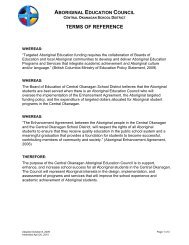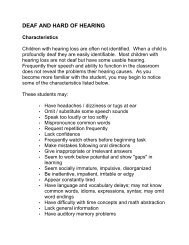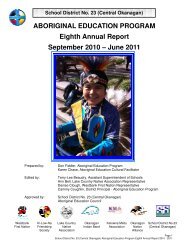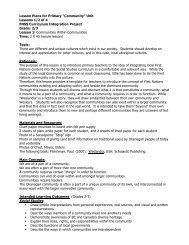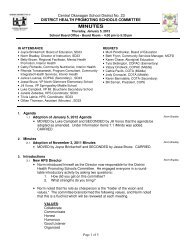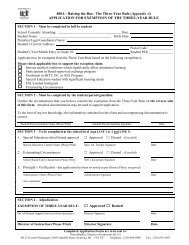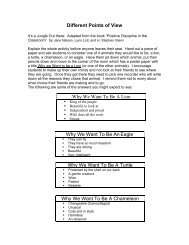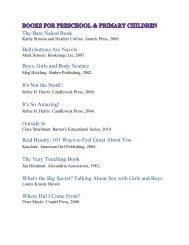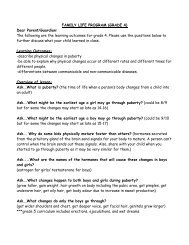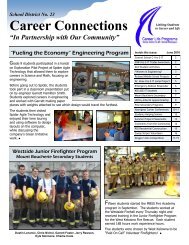Rationale: Introduction to Residential School unit Prescribed ...
Rationale: Introduction to Residential School unit Prescribed ...
Rationale: Introduction to Residential School unit Prescribed ...
You also want an ePaper? Increase the reach of your titles
YUMPU automatically turns print PDFs into web optimized ePapers that Google loves.
<strong>Rationale</strong>: <strong>Introduction</strong> <strong>to</strong> <strong>Residential</strong> <strong>School</strong> <strong>unit</strong><br />
<strong>Prescribed</strong> Learning Outcome(s): Government policies put in<strong>to</strong> place throughout his<strong>to</strong>ry, have affected<br />
Aboriginal people and still shape who they are <strong>to</strong>day (<strong>Residential</strong> <strong>School</strong>s 1831-1996 ).<br />
Indigenous languages are still spoken, sacred songs are still sung, and rituals are still performed.<br />
Instructional Objective(s): Students who have fully met the prescribed learning outcomes are able <strong>to</strong>:<br />
Describe the impact of the Indian Act on Aboriginal people (e.g., marginalization and<br />
dependency)<br />
Describe the impact of residential schools on Aboriginal people (e.g., destruction of lives and<br />
comm<strong>unit</strong>ies)<br />
Identify various Aboriginal responses <strong>to</strong> challenges (e.g., negotiations, protests, and court cases<br />
with respect <strong>to</strong> land and resource issues; demand for self-government)<br />
Formulate answers <strong>to</strong> questions such as the following:<br />
What are the challenges and benefits for Aboriginal people living on and off reserves?<br />
Why are Aboriginal people concerned about cultural appropriation?<br />
Teacher Preparation:<br />
Understandings:<br />
Essential Questions:<br />
• Laws change Aboriginal lives.<br />
• Indian traditions are still taught <strong>to</strong> Indian<br />
children.<br />
• What does it mean <strong>to</strong> have a tradition?<br />
• How does one law change the lives of some<br />
Aboriginal families?<br />
• Do you know what your name means?<br />
Lesson Activities:<br />
Teacher Activities Student Activities Time<br />
Students will be able <strong>to</strong>…<br />
Students will know…<br />
• Retell the events in order of time during the four<br />
days before Shi-shi-etko left for school, naming<br />
the person and places they went.<br />
• Identify three things that you would miss from<br />
home, if you had <strong>to</strong> live away from home. Why<br />
you would miss them?<br />
• Tell how their parents might feel if a law said<br />
their child had <strong>to</strong> go <strong>to</strong> a school far away from<br />
home.<br />
• Some laws keep families apart from each other<br />
while the children go <strong>to</strong> school.<br />
• Some families give children a traditional name,<br />
like Shi-shi-etko <strong>to</strong> honor their child.<br />
• All names are special and respected.<br />
• Respect traditions that are practiced by others.<br />
• Create a bag of memories. What is in it and why<br />
is each thing in it special <strong>to</strong> you?<br />
• Learn what their name means (find out why their<br />
parents chose it?).
Student activities<br />
Performance Tasks:<br />
1. Students and teacher will "write" a letter <strong>to</strong> Shi-shi-etko <strong>to</strong> tell her how they feel about the way she spent<br />
her four days before leaving home and how she may have felt the day she left home.<br />
2. Students will order events in time during the four days before Shi-shi-etko left for home, naming<br />
the person(s) she spent the day with, the places they went and some sights and sounds she<br />
experienced.<br />
Other Evidence:<br />
Design and create a student-made classroom quilt for Shi-shi-etko <strong>to</strong> "send" <strong>to</strong> her with the letter they "write"<br />
(colored paper or fabric, possibly with family, plant and animal pictures using any geometric shape and<br />
pattern). This can be sent <strong>to</strong> the Aboriginal Education program for display.<br />
Learn about the five senses and relate them <strong>to</strong> things in nature that were important <strong>to</strong> Shi-shi-etko and/or other<br />
familiar plant and animal life. Nature walks, study and collection of plant species, animal tracks, etc. can support<br />
this.<br />
Invite a singer/drummer <strong>to</strong> your classroom <strong>to</strong> perform a traditional song for the class.<br />
More Evidence:<br />
Learning Activities: What learning experiences and instruction will enable students <strong>to</strong> achieve the desired<br />
results: This lesson on putting events in order focuses on a striking era of his<strong>to</strong>ry for American Indians who were<br />
(and still are in some areas) required <strong>to</strong> leave home <strong>to</strong> attend residential (government boarding) schools.<br />
During the four days before Shi-shi-etko (the s<strong>to</strong>ry character) leaves home, she gathers the honor and beauty<br />
of her family and home, both in her heart and memory as she prepares a small pouch (memory bag) which she<br />
takes with her. Sharing this moving s<strong>to</strong>ry with young children and drawing on how they might feel <strong>to</strong> have <strong>to</strong><br />
leave their home and family <strong>to</strong> go <strong>to</strong> school far away, will create a poignant sense of empathy both for students<br />
and staff, for American Indian children who have lived (and continue currently) <strong>to</strong> endure this loss.<br />
The teaching focus is on empathy for the s<strong>to</strong>ry character and the joy she found each day – even with the challenge<br />
of having <strong>to</strong> leave her home and family. This lesson is part of one of the major federal policy<br />
periods – The Boarding <strong>School</strong> Period, from 1879 <strong>to</strong> present (the his<strong>to</strong>rical information is support for the teacher).<br />
Resources<br />
Campbell, Nicola I. (Interior Salish, Canadian Cree, Métis). Shi-shi-etko. Illustrated by Kim LaFave. Berkely,<br />
Calif: Groundwood Books, 2005. 28 pp. ISBN: 0-88899-659-4



